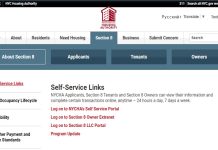Fixed Deposit (FD) is a popular savings option offered by banks and financial institutions that has existed for decades. It enables individuals to earn a fixed interest rate on their savings for a specific duration. FD, a low-risk option, is preferred by conservative individuals who seek stable returns on their savings.
The returns on FD are pre-determined and fixed during the entire tenor. The interest rate varies depending on the bank, the duration, and the deposit amount. In general, longer durations and higher amounts tend to offer higher rates of interest.
Fixed Deposit Strategies
The interest earned on FD can be paid out periodically (monthly, quarterly, half-yearly, or annually) or at maturity. They are also eligible for tax benefits under Section 80C of the Income Tax Act, 1961, up to a specific limit. Fixed deposits can be an excellent choice for those prioritizing capital protection, stable returns over higher risk, high-return investments, and easy liquidation.
However, with low-interest rates on FDs and inflation eating away at the returns, there are specific strategies you could follow to maximize your returns. The strategies deployed play a vital role in determining the magnitude of your returns. You can get maximum returns on your FD via the right approach. Read on to know more about such strategies, which can help you grow the returns, making it profitable.
Strategies to Maximise FD Returns
Here are a few strategies which can help you get maximum returns on your FD:
Consider Corporate FDs
Corporate FDs have become an emerging concept in comparison to those the traditional banks offer. The interest rates offered by the corporate FDs are 1-4% higher. Financial institutions such as NBFCs and others authorized to issue FDs offer such fixed deposits. If the corpus is high, a higher interest rate will significantly boost the returns on your savings. Hence, corporate FDs are a great way to beat the increasing inflation rate. Also, note that corporate FDs offer higher interest rates than bank FDs but come with higher risks. Before considering their FDs, research and evaluate the issuing company’s financial health and creditworthiness.
Compare the FD Rates Before Investing
The FD interest rates offered vary from bank to bank, and it is essential to compare rates between the issuers. Several websites provide comparison tools to help you find the best rates. FDs that offer higher interest rates will help increase the returns.
Choose Cumulative FDs
Cumulative fixed deposits are a good savings option for those looking for higher returns than non-cumulative ones. This implies that the interest earned every year gets added to your principal amount and earns interest in the subsequent years. In other words, you can earn interest on interest, which helps increase their returns.
Look for Special FD Schemes
Banks offer special fixed deposit schemes which offer higher rates of interest for a limited period. Such schemes could be linked with the festival seasons, senior citizen benefits, or other promotional offers. You must keep an eye out for these kinds of schemes and consider them accordingly to get maximized returns.
Split Across FDs with Different Tenors
Instead of putting all your money in one FD, consider splitting your funds across multiple FDs with different tenors and interest rates. This can help you earn higher returns and provide better liquidity. Suppose you have a lump sum amount; you can consider using a portion of the amount in a short-term FD to meet your immediate financial needs. The remaining amount can be utilized for an FD with a longer tenure to earn higher returns.
Consider Tax-saving FDs
Tax-saving FDs are a good option for those looking to save on taxes while earning returns. They come with a lock-in period of 5 years and are eligible for tax benefits under section 80C of the Income Tax Act, 1961, up to a specific limit.
FDs with High Ratings
It would help if you considered FDs with high credit ratings. Credit ratings issued by ICRA and CRISIL indicate the issuer’s creditworthiness and ability to repay debts. FDs with high credit ratings are considered less risky and more likely to provide higher returns.
Avoid Liquidation
Unforeseen events can arise at any point in your life. As tempting as liquidating your FDs may sound, it can be equally counterproductive. Premature withdrawals may result in penalties, making you devoid of your full interest-earning potential. You can opt for the overdraft facilities on your fixed deposit in such circumstances. They can provide you with the cushion you need by permitting you to borrow from your FD and pay the interest only on the amount you use. This will depend on the tenor for which that amount will have been used. Therefore, planning your finances to avoid premature withdrawals is essential.
Use the Sweep-in Facility
A sweep-in facility is an excellent option for those looking for better liquidity while earning returns. This facility enables you to link their savings account with their FD account. The excess balance in the savings account is automatically transferred to the linked FD account, where it earns higher interest rates than the savings account. You can withdraw the required amount from the linked FD account without breaking the FD and incurring penalties.
Work Around the Deposit Insurance to Minimise Risks
It is not a hidden fact that every asset class comes with certain risks. Fixed deposits are considered to be the safest among all the other options. However, it is not 100% free of risk. Hence, it is advisable to stay restricted to an FD amount of ₹5 Lakhs per family member to minimize risk. You can choose the survivor mode when opening your fixed deposit to make the liquidation easier.
Conclusion
Fixed deposits are a safe and reliable option that can help you earn stable returns over a fixed period. However, it would be best to remember that the FD interest rates rise with the rising inflation rate. Hence, getting started with FDs with shorter tenors and reinvesting once the rates increase could be a good idea. Analyzing your financial situation, goals, and requirements should be your first step. Think twice and opt for a strategy that will yield the maximum returns on your FD, helping you quickly achieve your financial goals.
Contents
- 1 Fixed Deposit Strategies
- 2 Strategies to Maximise FD Returns
- 2.1 Consider Corporate FDs
- 2.2 Compare the FD Rates Before Investing
- 2.3 Choose Cumulative FDs
- 2.4 Look for Special FD Schemes
- 2.5 Split Across FDs with Different Tenors
- 2.6 Consider Tax-saving FDs
- 2.7 FDs with High Ratings
- 2.8 Avoid Liquidation
- 2.9 Use the Sweep-in Facility
- 2.10 Work Around the Deposit Insurance to Minimise Risks





